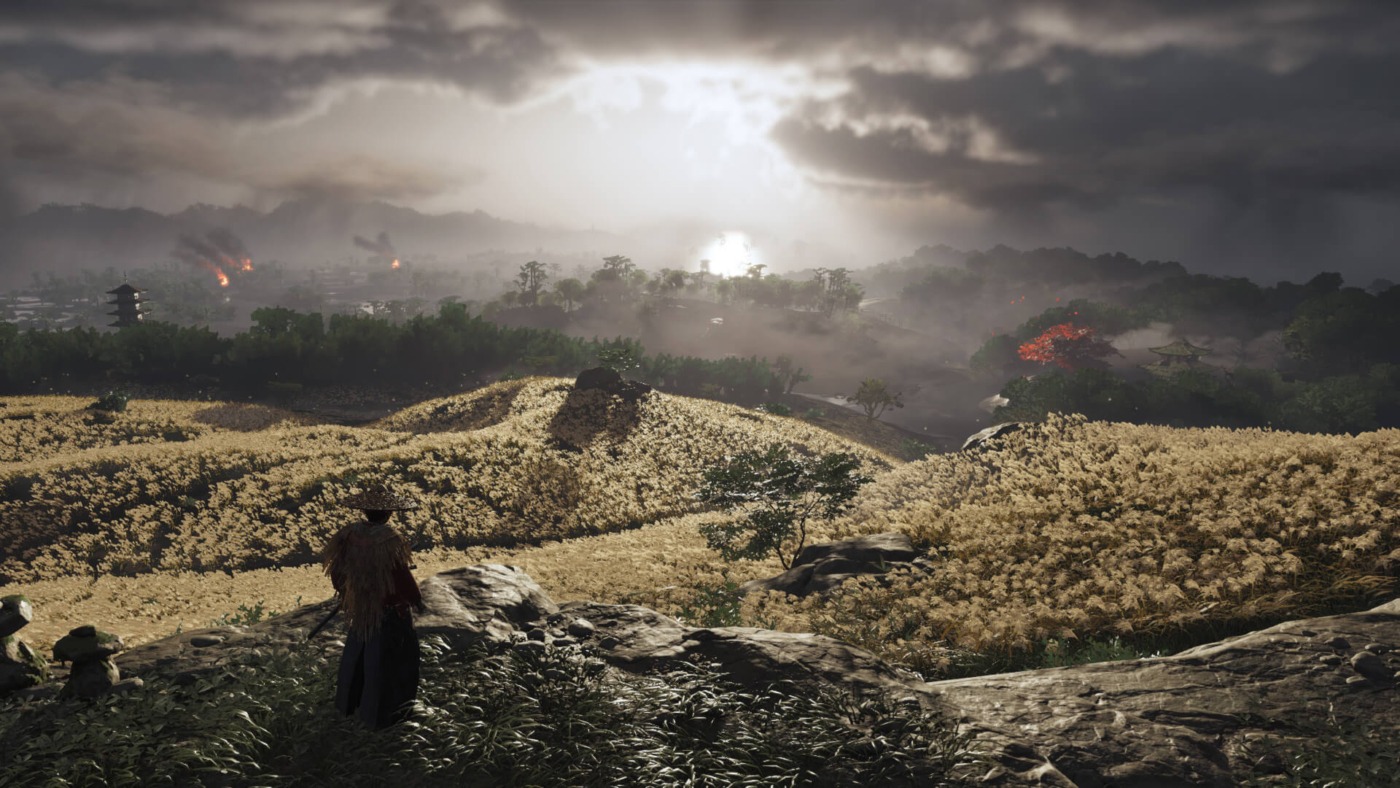Game of the Year: ‘Ghost of Tsushima’
If you had asked me in the latter stages of June which game I would call Game of the Year, I would have lauded The Last of Us: Part II for its truly gutting storyline, intense gameplay and stunning graphics. I would have probably described it as “the ultimate send-off to the PS4” or used some other hyperbole. Then Ghost of Tsushima came along.
It was easy to forget, amid all the hype for The Last of Us: Part II and the PlayStation 5, that Ghost of Tsushima was set to release on July 6. In fact, I only really started paying attention to Ghost of Tsushima following its State of Play video released in May. And thankfully, it was enough to convince me to pick up the game on release, because Ghost of Tsushima is my Game of the Year.
Let’s start with the most breathtaking aspect- the open-world. Throughout the 2010s, open-world games became the most popular genre, with instant classics like Breath of the Wild and The Witcher 3 being praised for the careful crafting of a huge map filled with things to do. Ubisoft games, on the other hand, were less praised for their commitment to the open-world identity.
Sucker Punch managed to create a game so rich in environmental detail that it was pretty easy to forget I was playing this on a 2013 console, and not the PlayStation 5
Ghost of Tsushima’s open-world is possibly the most beautiful of them all. With a huge variety of unique biomes spanning across Tsushima, Sucker Punch managed to create a game so rich in environmental detail that it was pretty easy to forget I was playing this on a 2013 console, and not the PlayStation 5. Of course, there’s no point in just having such an environment if it’s empty, but luckily the island is full of unique challenges, collectables, and places to discover. The most memorable of these is undoubtedly the haikus. While making players write haikus had the potential to be pretty cringeworthy, the brief pauses among all the destruction to reflect on your surroundings, the storyline and life in general struck a chord with me as no game has before. I even keep one of these haikus on my desk.
When you’re finished writing haikus and want to try your hand at slaughtering some Mongol invaders, Ghost of Tsushima does not disappoint. Blending stealth gameplay from Assassin’s Creed with the melee combat from Dark Souls, Ghost of Tsushima offers players two unique ways to approach every encounter. Do you stick with the honour of a samurai and face your enemies head-on, or should you embrace the identity of ‘The Ghost’, and use stealth to your advantage?
For those wanting a mixed style of gameplay, both these approaches are equally satisfying to use. The assassination and stealth mechanics function better than in Ubisoft’s most recent Assassin’s Creed games, while sword-fighting requires a detailed strategy of stances, crowd-control, and timing that goes beyond the hack-and-slash mechanics modern games often utilise.
Then there are the Duels. These one-on-one battles, taking the style of a classic samurai film, are intense, defining moments in the game that act as quasi-boss fights. I am an enormous fan of these ‘cinematic moments’ in video games, and Sucker Punch managed to perfectly capture what made Akiro Kurosawa’s iconic films so memorable, and that’s before even mentioning the specific Kurosawa mode which transforms your game into even more of an homage to the legendary director.
Ghost of Tsushima disproves the myth that open-world games cannot have good storylines
When it comes to Ghost of Tsushima’s plot, while I admit it’s certainly not as profound or impactful as The Last of Us: Part II’s, I was captivated the second part of the game, which sees Jin- the main protagonist- struggling between his role as an honourable samurai and ‘The Ghost’ while trying to overcome the Mongol invasion. The latter stages contain plenty of striking moments which I won’t spoil here, but let me put it another way- Ghost of Tsushima disproves the myth that open-world games cannot have good storylines.
On top of the single-player open-world adventure, Ghost of Tsushima’s post-release update included the Legends mode – a co-operative multiplayer mode that sees teams of up to four players coming together to defeat hordes of Mongol enemies. Taking the style of a looter-shooter, but with swords, the Legends mode slightly tweaks Ghost’s gameplay into a class-based setup, that utilised all the best elements from the single-player campaign, along with some additional extras. When comparing it to Marvel’s Avengers – another loot-based game released around the same time – Ghost of Tsushima: Legends offers more refined, enjoyable gameplay. Oh, and it’s free.
As I mentioned in my The Game Awards predictions, I really struggled this year in choosing between The Last of Us: Part II and Ghost of Tsushima for my Game of the Year, as these are two of the best games released in the PlayStation 4 era of gaming. Aside from all the reasons I’ve mentioned above, it was the surprise of Ghost of Tsushima that led me to pick it above The Last of Us: Part II. Everyone knew Naughty Dog’s sequel was going to be good, moreso than they did with Ghost of Tsushima. Much like Westworld, Guardians of the Galaxy, and Adam Sandler’s performance in Uncut Gems, it surpassed all my initial expectations. Let’s hope it doesn’t get snubbed (Sorry, Adam Sandler).

Comments